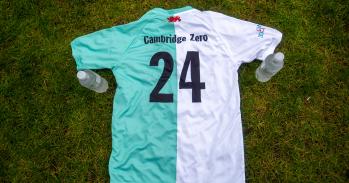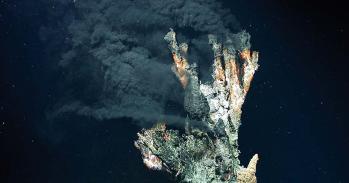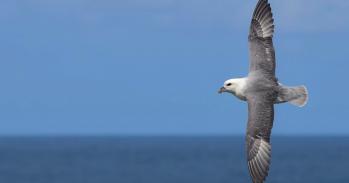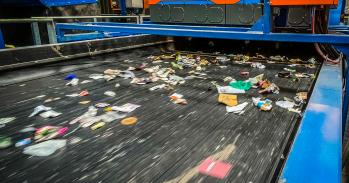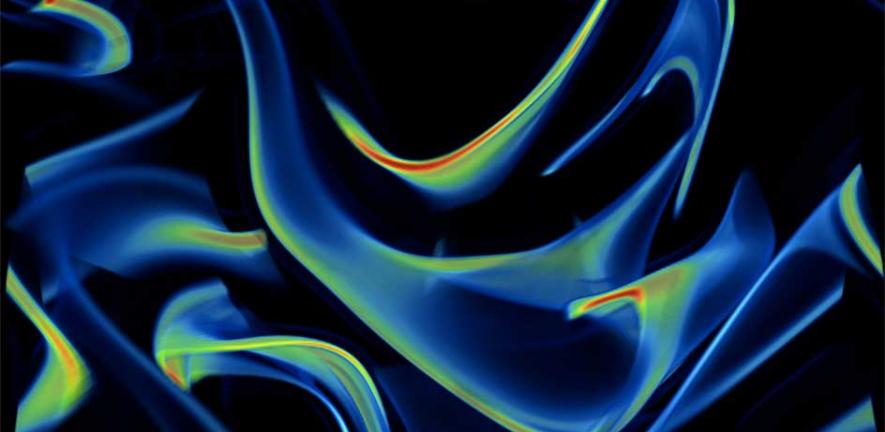
Microscopic organisms living in the ocean play a key role in sustaining life. New research has shown how oceanic turbulence affects the ability of these organisms to recycle organic material back into the food web.
Microscopic organisms living in the ocean play a key role in sustaining life. New research has shown how oceanic turbulence affects the ability of these organisms to recycle organic material back into the food web.
Our research suggests that the optimum environment for chemotaxis is one of intermediate turbulence intensity.
Dr John Taylor
We generally associate the essential process of photosynthesis with plants. But roughly half of the world’s photosynthesis is carried out by microscopic organisms called phytoplankton living in the sea. Both land-living plants and free-floating phytoplankton absorb carbon dioxide and produce the oxygen that is essential to life on earth.
In the process of generating oxygen, phytoplankton produce waste matter in the form of organic material, some of which becomes dissolved in the seawater. This dissolved organic material is then absorbed by marine bacteria foraging for food. Bacteria are consumed by larger organisms such as amoeba which are, in turn, devoured by larger organisms such as arthropods and fish.
By means of this recycling process, the organic waste material excreted by phytoplankton becomes part of the microbial loop – and contributes to the functioning of the marine food web.
Research by Dr John Taylor of the Department of Applied Mathematics and Theoretical Physics at Cambridge University and Dr Roman Stocker of the Department of Civil and Environmental Engineering at MIT has shown for the first time that the movement of seawater – including small whirls and eddies – can directly affect the ability of marine bacteria to absorb organic material, such as that produced by phytoplankton.
Their study, published today in the journal Science (1 November), looks at the relationship between the natural movement of water within the ocean and the ability of marine bacteria to act as recyclers. Computer models of different scenarios revealed that a delicate balance exists between the extent of turbulence and the recycling activity of bacteria - with high and low levels of turbulence linked to lower recycling rates.
The research also looked at the way in which the physical environment of the ocean might help to select the most successful types of marine bacteria, all of which compete for nutrients. Some marine bacteria have evolved the ability to swim. Swimming bacteria, known as motile bacteria, have advantages over non-swimming species in foraging for food. Some bacteria can even detect and respond to chemicals dissolved in the surrounding water, an ability known as chemotaxis. However, swimming is energy-intensive so motile bacteria swim only when it is “worth the effort” in terms of pay-back.
The researchers compared the activity of motile and non-motile bacteria across environments that differed in terms of levels of water movement and nutrient availability. All water moves but the extent of its turbulence varies widely in the ocean. Wind and waves strongly churn the water near the surface, while the level of turbulence is much lower in the deep ocean interior. .
The study showed that the organic matter excreted by phytoplankton is quite patchy in the ocean, not as uniform as had been thought. Organic matter enters water in bursts, after which a natural mixing and stirring action comes into play and the organic matter is dispersed. The patterns of dispersal depend on the strength of turbulence and the extent of stirring and mixing.
“When you pour cream into coffee and stir it carefully, you get swirls of cream. Something similar happens – on a tiny scale – when bursts of organic matter enter gently moving water. The swirls of organic matter are easily accessed by swimming bacteria which surround and absorb it. If you mix cream into your coffee vigorously, it quickly becomes evenly dispersed. When this happens in an area of the ocean, the swimming bacteria have less to gain in seeking out the thinly-dispersed organic matter,” said Dr Taylor.
Bacteria get energy from organic matter – but they also expend energy in swimming. So there is a subtle trade-off between the uptake benefit due to chemotaxis and the cost of locomotion.
“Our research suggests that the optimum environment for chemotaxis is one of intermediate turbulence intensity – when the bursts of organic matter are stirred into thin filaments which can be exploited by large numbers of bacteria. The best environment for motile bacteria is one in which the organic matter is lightly stirred into the water rather than vigorously mixed,” said Dr Taylor.
This work is licensed under a Creative Commons Licence. If you use this content on your site please link back to this page.


